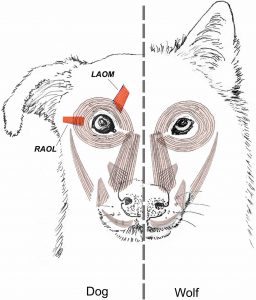Human culture cannot be separated from nature. Harris and Ciopolla, champions of emerging archaeological techniques, explain that human culture is influenced by the nature around it and vice versa. (Harris and Ciopolla 2007) The field of Zooarchaeology studies the relationships between humans and animals throughout time. Humans and dogs in particular, have coexisted and bonded in ways that transcend culture. Dogs as domestic pets can be found at archaeological sites throughout the world and spanning eras. By applying archaeological techniques to the remains of dogs, Zooarchaeologists have worked to determine exactly when and where dogs were first domesticated by humans.
The archaeological record of the domestication of dogs has been unclear for much of the modern era. Originally it was thought that there were two independent domestication events. One occured in Europe and one in Asia. However, new technology, such as the emergence of DNA testing has allowed researchers to debunk this theory. Even though all dogs evolved from the Grey Wolf, the genetic difference between eastern and western dogs is what led many to argue that two different domestication events occurred. By testing the DNA of prehistoric dogs found in Germany and Ireland against that of modern European dogs, archaeologists found that the DNA of the prehistoric dogs was very similar to that of the modern European dogs. This directly contradicted previous findings, stating that they weren’t genetically similar. With this new data, Archaeologists were able to determine that dogs were most likely domesticated through a single domestication event. As stated in Nature Magazine, “The researchers estimate that dogs and wolves diverged genetically between 36,900 and 41,500 years ago, and that eastern and western dogs split 17,500–23,900 years ago. Because domestication had to have happened between those events, the team puts it somewhere from 20,000 to 40,000 years ago.” (Lallensack 2017) This new study argues that dogs must have been domesticated before the genetic split to account for them being genetically different from wolves.
It is also important to note that since the sample size of prehistoric dogs is so small, it is hard to say for certain when and where dogs were first domesticated. Until more diverse data is found and analyzed, this study, while intriguing, does not provide a conclusive answer to the questions of where and when dogs were first domesticated. Researchers have agreed, however, that the process of domesticating dogs was a passive one that is the result of tamer wolves becoming increasingly dependent on humans to survive. This relates back to Harris and Ciopolla’s argument that human culture is dependent on the nature around it and vice versa. The wild wolves slowly became more dependent on humans to survive which led to domesticated animals becoming an integral part of human culture.
References:
Sources:
Lallensack, Rachael.
2017 Ancient genomes heat up dog domestication debate. Nature (magazine) July 18 2017. https://www.nature.com/news/ancient-genomes-heat-up-dog-domestication-debate-1.22320, Accessed November 3, 2019.
Harris, Oliver J.T. and Craig Cipolla.
2017 Multi-species Archaeology: People, Plants, and Animals. In: Archaeological Theory in the New Millennium: Introducing Current Perspectives. Routledge. Pp. 152-170.
Images:
Figure 1:
https://www.sleddogsocietyofwales.co.uk/evolution-of-dogs.html
Figure 2:
https://www.the-scientist.com/news-opinion/domestication-might-have-sculpted-eyebrow-expressions-in-dogs-66020
Further Reading:
If you want to know more about earlier theories and studies into dog domestication, this article goes into detail about the previous theory of a dual domestication event using data from a 2016 study:
https://www.nature.com/articles/nature.2016.20027
This article uses actual data from dog domestication studies to fact check the TV Show “Alpha”
https://www.smithsonianmag.com/science-nature/how-wolves-really-became-dogs-180970014/





